Savior or Scourge: The Changing Opinions Around AI
January 31, 2025Happy? Ask Me After the Game: How Consumer Moods Are Impacted by the Performance of Their Favorite Team
February 5, 2025Latest technological advances present great opportunities for consumers, but they also raise some concerns with many. Two of the biggest concerns are around data privacy and artificial intelligence as people navigate the intersection of personal data, evolving technologies, and ethics. We wanted to understand consumers’ concerns on these topics better, so we asked them in our recent round of research-on-research. Let’s dive into what we found.
Overall
Overall, we found that a majority of respondents expressed significant concern about data privacy, with 56% ranking it high on a 10-point scale, while only 9% reported little to no concern. We found a slightly smaller gap with AI, with 45% reporting a high concern and 13% indicating a low concern.
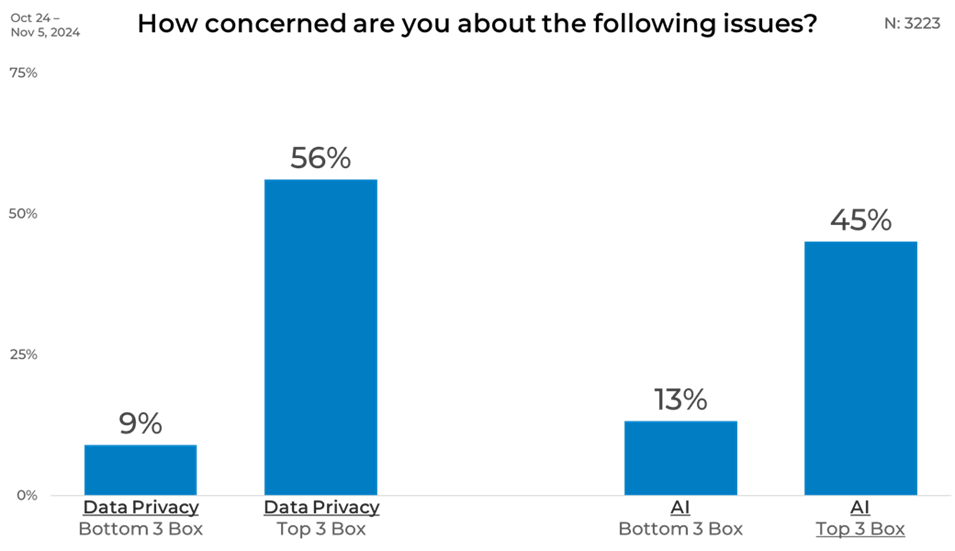
Wave-Over-Wave
We compared our recent data to data we collected in 2023 and found some surprising results. The level of concern for AI or data privacy has changed very little from 2023 to 2024. The most significant change we found was that 3% more respondents indicated a high concern about data privacy in 2024 compared to 2023 levels.
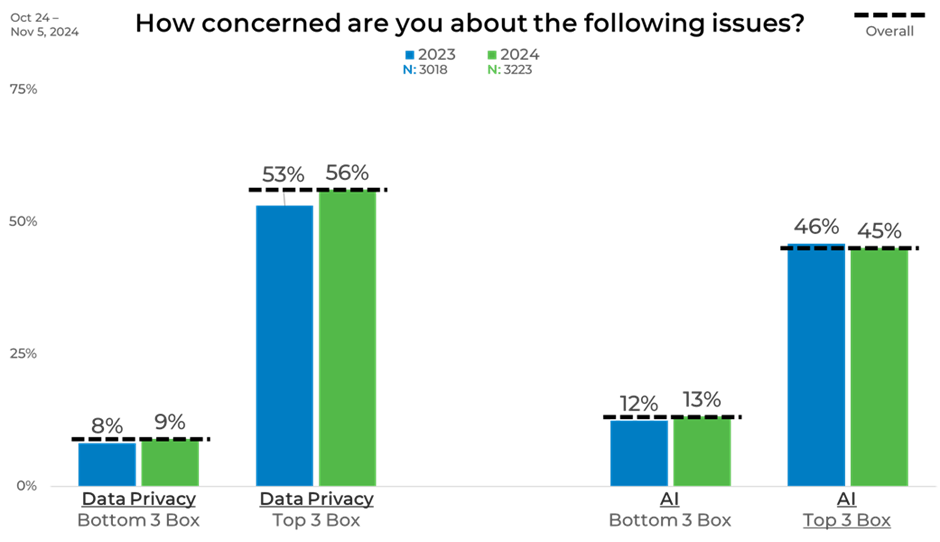
Gender
Men and women show nearly identical attitudes toward data privacy. Minimal concern is reported by 9% of both groups, while high concern is slightly stronger among women (57%) than men (55%). This slight difference suggests a generally shared perspective but with a slightly heightened awareness among women.
Regarding AI, men are marginally more dismissive, with 14% showing little concern compared to 12% of women. However, their levels of strong concern are nearly the same, at 46% and 45%, respectively.
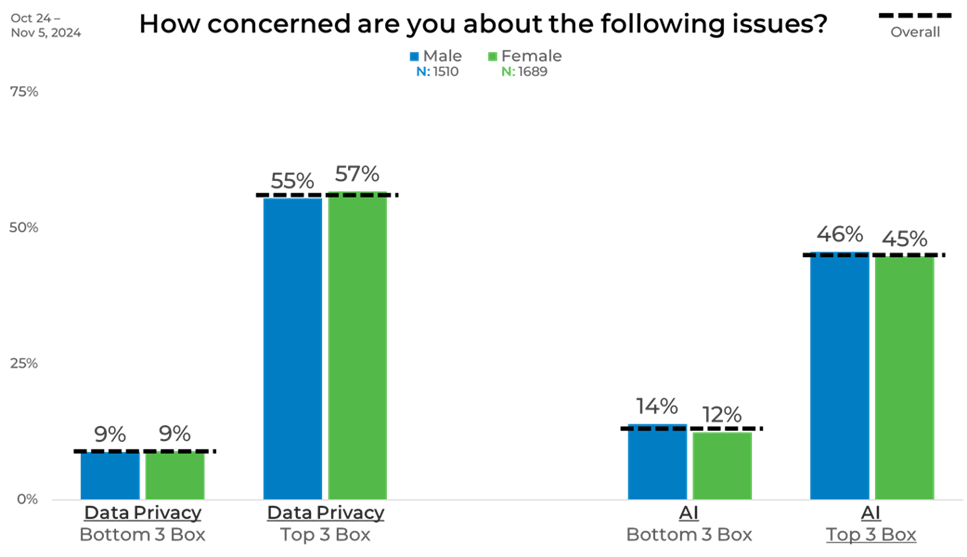
Age
Age plays a significant role in attitudes toward both topics. We found that concerns about data privacy increase with age, starting at 39% among 18–24-year-olds and rising to 67% among those 65 and older.
Concerns about AI follow a similar pattern but with a more pronounced drop-off. While 39% of 18–24-year-olds were highly concerned, that figure rises to 58% among seniors. Interestingly, younger respondents were also more likely to be indifferent, with 16% of those under 25 in the bottom concern category—more than double the rate of the 65+ group.
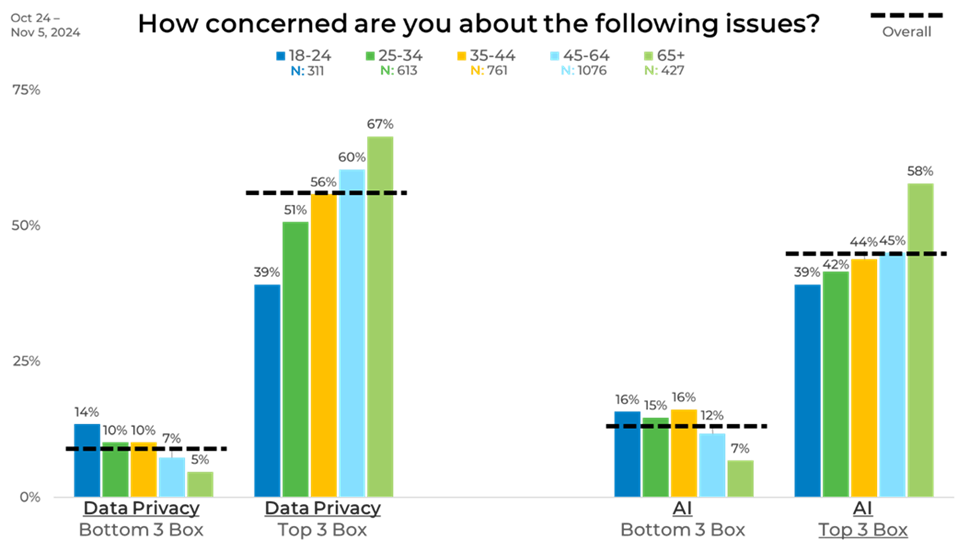
Income
Income also plays a role in consumer concern levels. Lower-income respondents showed the highest level of worry about both topics, with 48% of those earning under $20,000 expressing strong concern about data privacy, compared to 62% of those earning over $100,000. The trend was similar for AI, where 38% of lower-income individuals reported high concern, compared to 50% among the highest earners.
Interestingly, those with the lowest incomes were also the most likely to express minimal concern, with 16% in the bottom box for data privacy and 17% for AI.
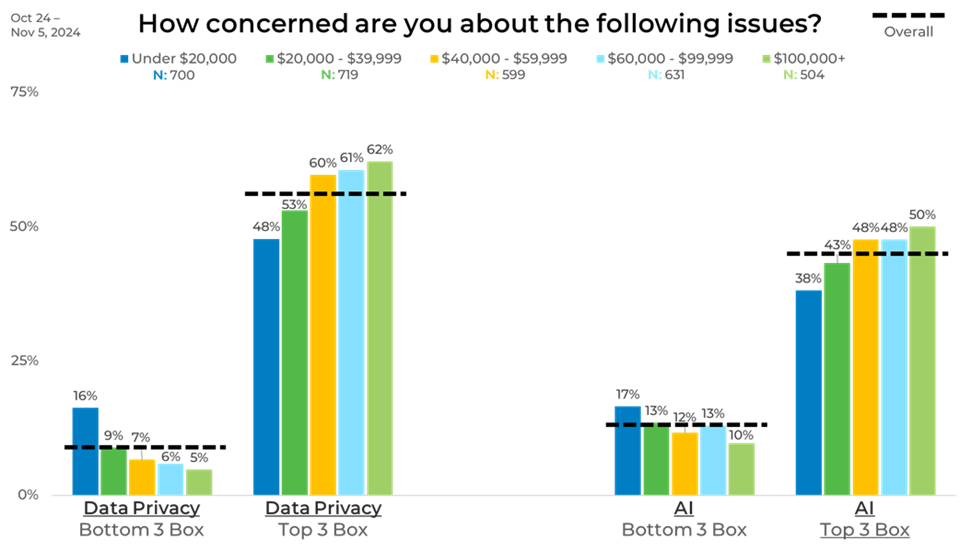
Ethnicity
When breaking down the data by ethnicity, we found that nearly all ethnicities have similar levels of high concern regarding data privacy. There were more variations around concerns with AI, with Caucasians and Asians reporting the highest levels of concern. However, no single ethnic group stands out as being dramatically more or less concerned than the rest.
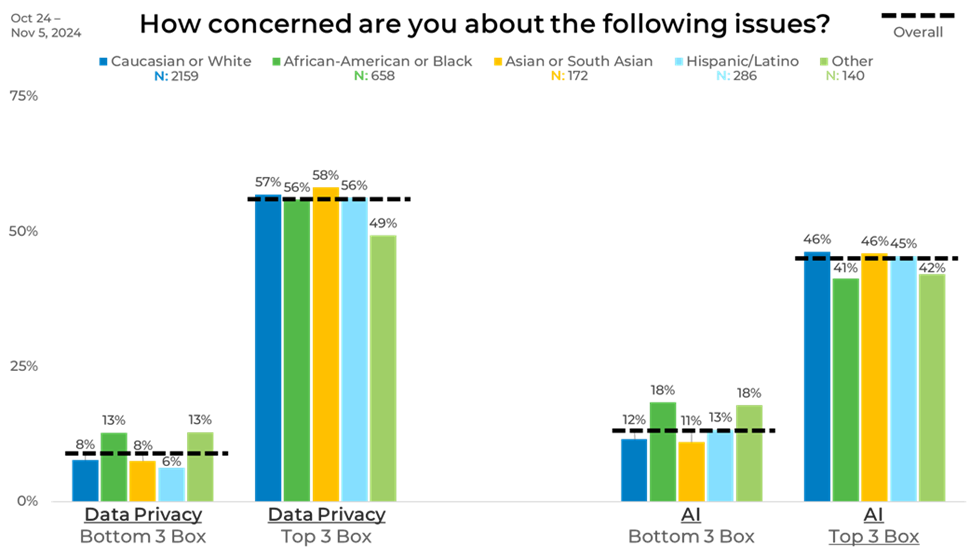
Panel
We found some of the biggest differences in the levels of concern with both data privacy and AI when we looked at the data by panel. LPanel A had the highest concern for data privacy at 63%, 16 points higher when compared to Panel C, whose respondents were least concerned at 47%. AI concern levels also varied, with Panel L showing the highest top-box concern at 49%, compared to just 39% in Panel C.
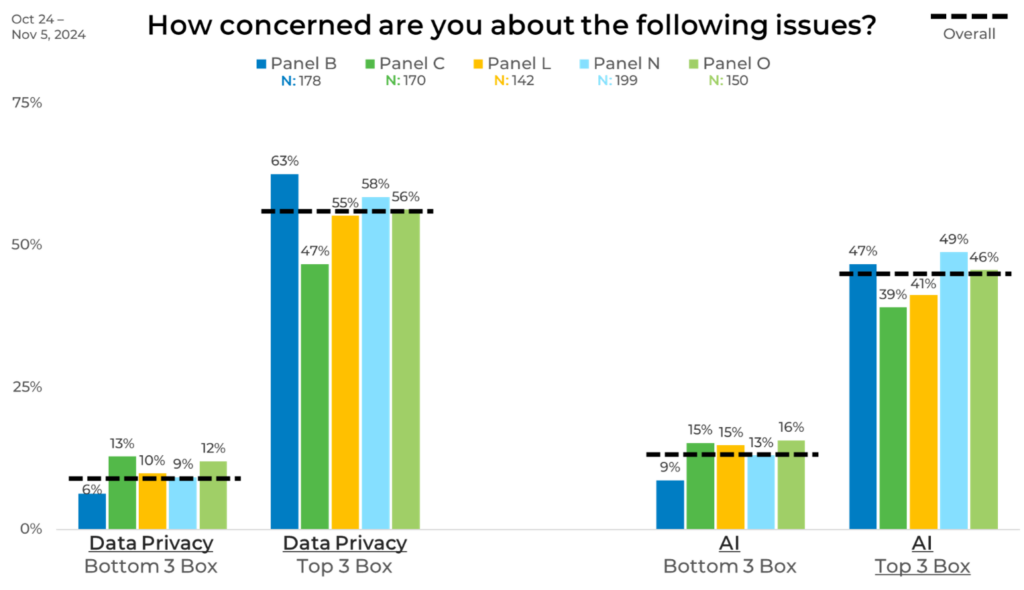
These differences emphasize the importance of blending multiple panels in research to capture a complete and accurate picture of public opinion. Relying on a single panel could skew the results, as individual panels often reflect unique biases or sampling differences. Click the button below to learn more about strategic sample blending.



